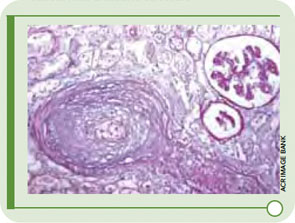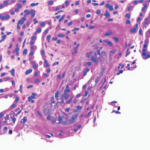Her goal was to assess whether the use of ACE inhibitors prior to the onset of SRC was associated with worse outcomes. Because SRC is so rare, she hypothesized that if she could enlist most of the world’s scleroderma experts to help her find and follow cases, she could find enough patients within a short time to answer the question.
The details of the methodology of this study have been published in the International Journal of Rheumatology.4
In September 2008, Dr. Hudson compiled a list of e-mail addresses for more than 550 rheumatologists with an interest in SSc from the Canadian Scleroderma Research Group, the Scleroderma Clinical Trials Consortium, the EULAR Scleroderma Trials and Research (EUSTAR) group, and other international collaborators, particularly from Colombia, Mexico, and Australia. They were contacted and invited to participate in the Web-based survey. Thereafter, every participating rheumatologist was sent an e-mail on every second Friday afternoon asking them simply, “Have you diagnosed a case of SRC in the past two weeks?” They were asked to check a yes or a no box. If the answer was no—and in most cases it was—that was all that was required of them for that period.
We calculated that a total sample of approximately 60 subjects would be needed … 15 months after the start of the survey, we had identified 76 incident cases of SRC.
If the answer was yes, they were then asked to answer a simple, short survey about their case; the survey required about five minutes to complete (see Figure 2, p. 24). The survey was developed and conducted using SurveyMonkey, a simple, inexpensive, Web-based survey tool. The survey allowed us to collect data on many important variables, such as patient demographics, disease characteristics, blood pressure and renal function prior to the onset of SRC, current use of ACE inhibitor or angiotensin receptor blockers (ARBs) at the time of diagnosis, concomitant medications, and signs and symptoms used to diagnose SRC.
The primary outcomes of interest were defined as death or dialysis at one year after the onset of SRC. One year after a patient is identified, a simple follow-up case report form is sent by e-mail to the recruiting rheumatologist. At study completion, the rates of dialysis or death at one year in SSc patients with SRC exposed to ACE inhibitors at the time that they developed SRC will be compared with the rates in those not on ACE inhibitors at the time they developed SRC. We calculated that a total sample of approximately 60 subjects would be needed to detect the estimated increased risk in poor outcomes in those exposed compared with those unexposed to ACE inhibitors.

Measure of Success
As of February 2010, 15 months after the start of the survey, we had identified 76 incident cases of SRC. Approximately half of the cases were from Canada and the United States and the other half from elsewhere around the world. Twenty-two percent of the patients were on an ACE inhibitor and 5% on an ARB at the onset of SRC. To date, we have collected one-year follow-up data on approximately one-third of the cohort. Of these, over 50% have died or remain on dialysis at one year. Collection of one-year follow-up data on the remainder of the patients is ongoing and when complete we will analyze the data for the outcomes of interest.


